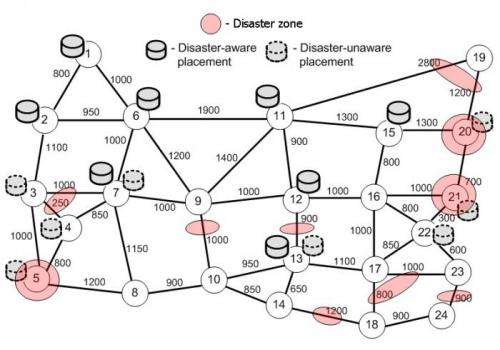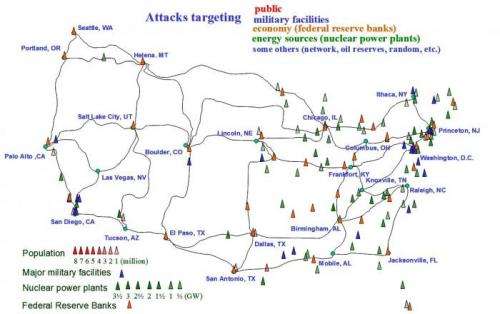When disaster strikes: Safeguarding networks

Disasters both natural and human-caused can damage or destroy data and communications networks. Several presentations at the 2014 OFC Conference and Exposition, being held March 9-13 in San Francisco, Calif., USA will present new information on strategies that can mitigate the impacts of these disasters.
New Algorithm Finds Safe Refuge for Cloud Data
Much of our computing these days, from browsing websites and watching online videos to checking email and following social networks, relies on the cloud. The cloud lives in data centers – massive warehouses filled with thousands of servers that run constantly. Disasters such as earthquakes, tornadoes, or even terrorist attacks, can damage the data centers and the communication links between them, causing massive losses in data and costly disruptions.
To mitigate such potential damage, researchers from the University of California, Davis (UC Davis), Sakarya University in Turkey, and Politecnico de Milano in Italy, first analyzed the risk that a disaster may pose to a communications network, based on the possible damage of a data center or the links that connect them to users. Then, they created an algorithm that keeps data safe by moving or copying the data from data centers in peril to more secure locations away from the disaster. The algorithm assesses the risks for damage and users' demands on the network to determine, in real-time, which locations would provide the safest refuge from a disaster.

"Our content placement solution can be implemented with some modifications on any existing settings of data centers and it is adaptable to different dynamic disaster scenarios," said researcher Sifat Ferdousi of UC Davis. "This can highly benefit the network providers in designing disaster-resilient cloud networks."
Presentation M2H.4 titled, "Disaster-Aware Dynamic Content Placement in Optical Cloud Networks" will take place Monday, March 10 at 3:15 p.m. in room 130 of the Moscone Center. The work was done as part of a research project at UC Davis funded by the U.S. Defense Threat Reduction Agency.
Integrating Wireless with Fiber for Temporary Emergency Networks
Earthquakes, tsunamis, and other natural disasters can sever the optical fibers that carry data across long distances, leaving telecommunications networks useless. If fiber-optic cables are down, wireless communication can fill the void and be part of a temporary, emergency network. But for such a system to work, wireless technology would have to be integrated with the fiber-optic network that transports data around the world.
Such an integrated wireless optical system would combine the speed and bandwidth of fiber optics with the mobility and range of a wireless network. This system could also be applied in home networks, in which data is sent via optical cables to the home then broadcasted wirelessly.
One big challenge of an integrated system, however, is to develop the wireless links that can handle the speed and capacity of optical cables. Researchers from Fudan University in Shanghai and ZTE (TX), Inc. in Morristown, N.J., USA have now developed a new antenna architecture that allows for a simple and high-speed integrated wireless optical system. The design relies on two pairs of antennas, explains Jianjun Yu of ZTE. Because each pair is polarized differently and isolated, there's no interference between the two pairs, allowing for a simpler structure and a larger transmission capacity. The new system achieves a data-transmission rate of 146 gigabits per second (Gb/s), which is the highest bit-rate-per-channel in a wireless signal shown so far, Yu says.
Provided by Optical Society of America


















